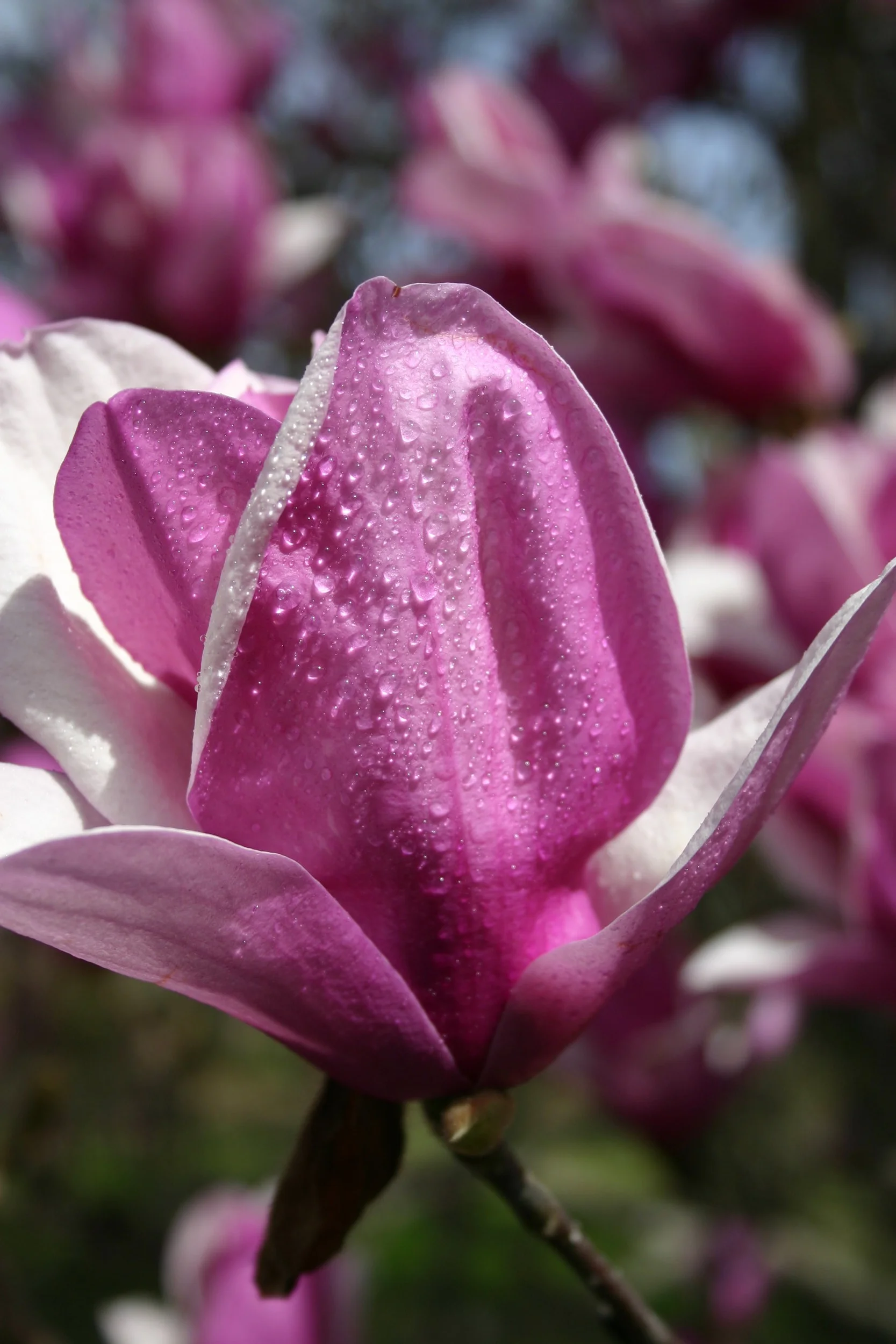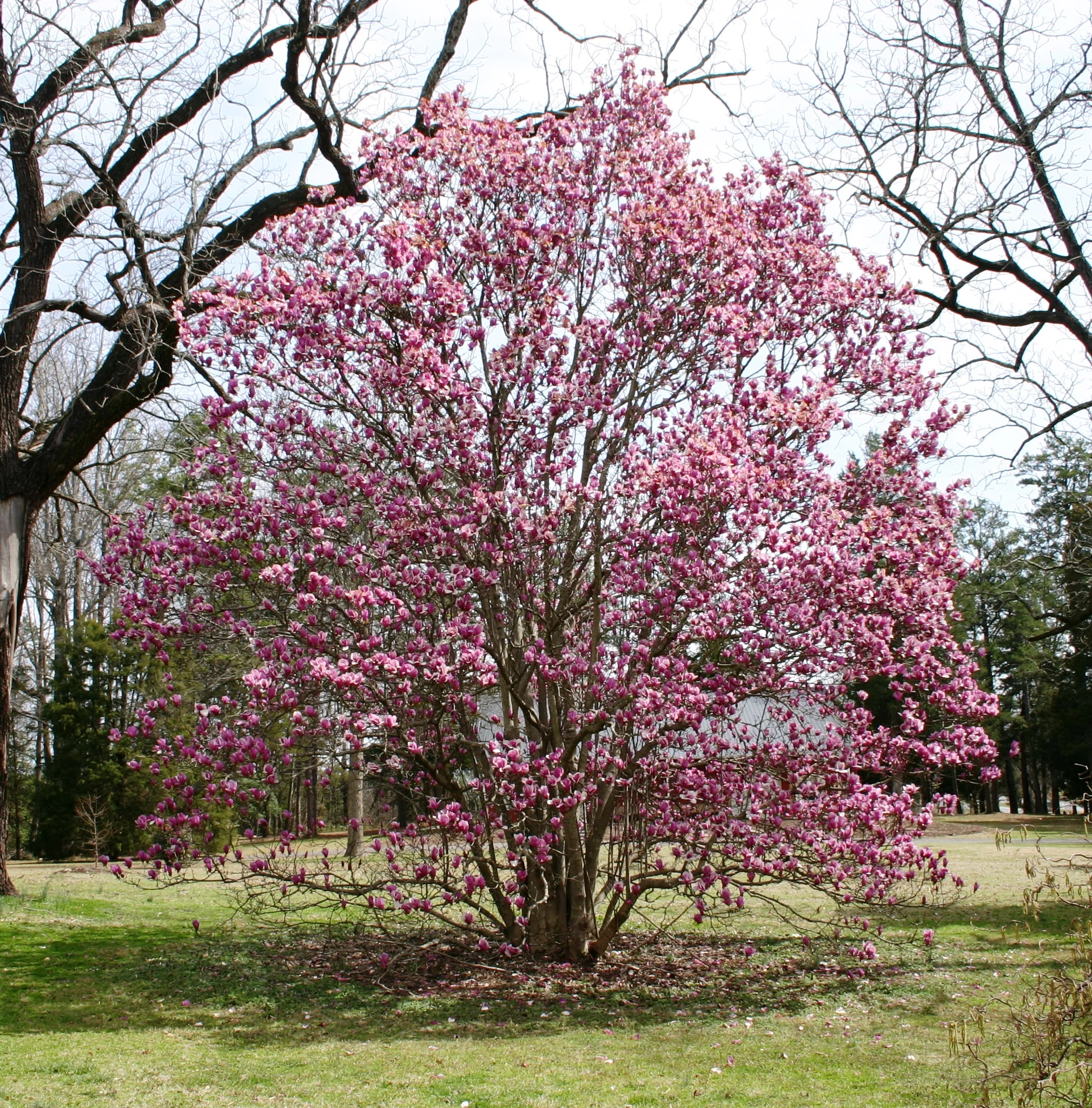Star Magnolia, Magnolia stellata, is one of the earliest plants to flower each year. It is a slow-growing, short tree (25 feet or less) or large shrub, typically multi-stemmed. The white blooms appear in February or March, and can be damaged by frosts and freezes. Site them carefully, avoiding windy locations and sites with southern exposure that can lead to earlier flowering and worsen cold damage. They can also be grown in a large container. They prefer to be planted in spring rather than autumn.
Star Magnolia tolerates some shade but will flower best when grown in full sun and in moist, neutral to acidic soil. It tolerates heat but not excessively dry or constantly wet soils, and can be grown in zones 4 through 8. Leaves turn yellow in autumn before they drop.
While Magnolia stellata is overlooked in favor of its showier cousins, Magnolia soulangeana and Magnolia grandiflora, its small size makes it easy to incorporate into foundation plantings. It makes a good specimen, especially when backed by evergreen shrubs that will highlight the pure white flowers and the smooth, light gray bark. Several pale pink cultivars are available.
Star Magnolia is rarely bothered by insects or diseases.
The pure white flowers of Magnolia stellata appear before leaves.
A mature, tree-form Magnolia stellata in flower.






